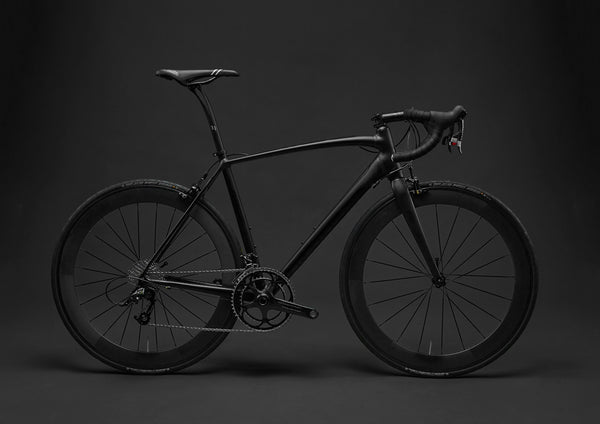With autumnal and even wintry conditions hitting around the country, it’s becoming increasingly more difficult to stick to the road bike, with road conditions sometimes sketchy due to terrible weather. For anyone looking to stick to riding a dropbar bike outside through the winter, owning a cyclocross or gravel bike can be invaluable help.
Obviously cyclocross and gravel bikes have uses beyond just being great winter bikes, but with the weather closing in on us, it’s an apt time to discuss the differences between the two disciplines. And if you are looking to add a knobby-tired dropbar bike to your collection, there are important differences between the two categories that will help you decide which route you want to go.
Cyclocross vs gravel bike
Around the end of August/beginning of September, you’ll probably start hearing certain people say with glee: “Cross is coming!” They are referring to the start of the cyclocross racing season that has traditionally acted as a form of competition and training possibilities for road riders (mostly) during their off season. Those crazy Euros up in Belgium and the Netherlands in particular have popularized the discipline and lionized the most successful racers throughout the decades.
Cross racing has become increasingly popular in the United States in recent years, thanks in large part to the expansion of the UCI Cyclocross World Cup to North American venues like Las Vegas, Jingle Cross Iowa, Waterloo, Wisconsin and Fayetteville, Arkansas.
Racing cyclocross usually requires about an hour’s full-out effort with courses looping through woodsy and grassy courses that include both natural and manmade obstacles. It tests both power and skill. Cultivating the ability to dismount and remount while still rolling will be essential, while having the skill to bunny hop the hurdles that can be over a foot high (max allowed is 40 cm or 1.3 ft) can mean the difference between winning and being lapped out of the race. Oftentimes, the natural obstacles will include very steep inclines in the woods or on grassy knolls where you will be required to power up or even run up carrying your bike.
Unique cross bike features
These types of race requirements have had an impact on how cross-specific bikes are designed. For many years they came equipped with either cantilever or v-brakes that apply braking pressure at the rim, but allowed wider tires to be used. Now, as with nearly all bikes, disc brakes are the norm. But the regulations haven’t changed: the max tire width for a UCI cyclocross race is still 33 mm. Of course, most brands that make cyclocross-specific bikes do design around greater tire clearance, for those times that the riders would like to run something wider, when not racing a UCI sanctioned event.
Cross-specific bikes will also have very different geometries than their gravel cousins. Since the bikes are intended to be raced for a relatively short period, comfort is not as important as responsiveness and agility. If you are only going to be on the bike for barely an hour, you won’t have to worry as much about back fatigue or unforgiving frame stiffness. Other changes also come thanks to the habit of carrying the bike on your shoulder when running up stairs or steep inclines. Many brands will introduce a comfort-kink or flatten the bottom side of the top tube at the point where it will rest on your shoulder.
Similarly, the bottom bracket will be raised compared to a gravel or even a road bike. That has the effect of helping you clear obstacles more easily and reduce the chance of pedal strikes when pedaling through corners.
If you want to start racing cross, then you will definitely want to buy a cross-specific bike. As we will detail below, there are some gravel bikes that can do double-duty as cross racers as well, but in general having these cross-specific designs will play an important role in how comfortable and successful you are in your cyclocross racing.
Similarly, if you are a pure roadie, you might prefer to buy a cross bike for your winter training bike for many of the same reasons that the bikes work so well in cross racing: they are snappy and responsive thanks to the aggressive geometry, shorter chainstays, and lightweight designs.
Variety of gravel options
Those types of cyclocross features mean that the bikes are frequently inappropriate for the more endurance-oriented gravel rides and races. With adventure being the catchword for the day, gravel bikes need to be able to offer a mix of speed, comfort, and capability in varying degrees.
As a rider you need to decide whether you are looking for a fast gravel bike that will approximate your road riding setup or would rather focus on the capability and comfort for longer, more off-road focused rides. Are you looking for racing speed or adventure? Once you settle on your riding style and what type of gravel roads you’ll be tackling most, then you can start to whittle down the options. A fast Wilier or a super capable Moots? An all-rounder like a Parlee or an MTB-esque Evil Bikes gravel grinder?
Race gravel vs endurance gravel
Though people have been riding gravel from the very beginning of the bicycle, as a category, Gravel is quite a recent addition for bike brands. The differences you’ll see between gravel and cross bikes are important enough that there really is very little overlap in terms of uses, just in the same way that it would be very difficult for professional cyclocross racers to jump from cross directly into gravel racing without some major changes to their training plans.
That’s because gravel requirements are much different from cross. The rides are longer and the gravel conditions are often much worse. So you’ll find even the “fast gravel” racing-oriented bikes will have slacker geometries compared to cross bikes, even if they try to approximate the geos of their road bike cousins. A bike like the Pinarello Grevil F takes inspiration from the Dogma F, but still has a gravel-focused slacker geometry than the road racing focused Dogma F.
Even more important from gravel racing viewpoints is the increasingly more generous tire clearance that gravel bikes offer. Instead of the 33 mm clearance most cross bikes stick to, modern gravel bikes demand at least 40 mm and even up to 45 and 50 mm tire clearance. Gravel frames will also often accommodate both 700c and 650b wheels, which will enhance the tire choice possibilities too, since fitting a 650b wheelset on a gravel frame often allows the rider to fit up to 2.1-inch mountain bike tires.
Cross bike vs gravel bike - conclusion
When you are considering what sort of dropbar off-road bike you want, you may be wondering what is the difference between gravel vs cyclocross bikes. Though in many ways similar, there are definite differences between the two types of bikes. And whether you want one over the other will depend entirely on what type of riding and racing you will want to concentrate on doing. Knowing what style of riding you plan to do with the custom built gravel and/or cross bike you can buy at Wrench Science will make your search a lot easier.
You may also be interested in winter bike gear essentials.



































































































































































































































































